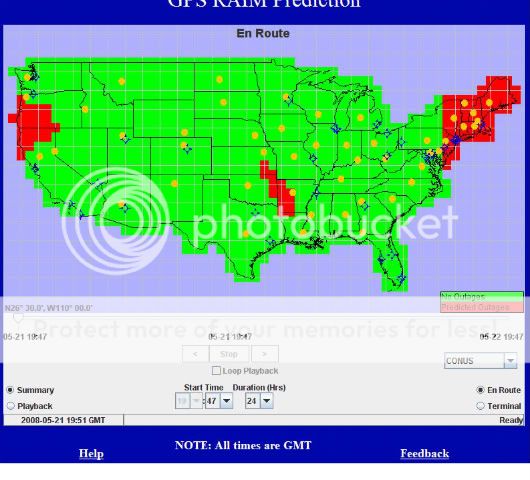TangoWhiskey
Touchdown! Greaser!
This is a follow-up to this post: http://www.pilotsofamerica.com/forum/showpost.php?p=296512&postcount=36
I attended this event last night. Some points and observations of interest (Larry is a great and entertaining speaker, by the way):
And finally, a pop quiz on some topics, to keep this thread going, and to introduce some other interesting points:
I attended this event last night. Some points and observations of interest (Larry is a great and entertaining speaker, by the way):
- Next month, LPV approaches will outnumber ILS approaches in the U.S. for the first time!
- There is zero funding for ILS approaches--no new installations are planned. All money is going to space-based WAAS approach development.
- Yes, NDB's are going away too--through attrition (after that initial decom sweep they made). When the units break, they aren't being fixed.
- VORs will be go away too... that is, terminal and low-altitude VORs. The High-Altitude VORs will be kept in service. VOR counts will drop from 1200 or so currently to around 450 when they're done.
- There is another new approach category under development, to augment our current LNAV, LNAV/VNAV, and LPV approaches, and it's called "LP". LP approaches will be "localizer precision" but without vertical guidance/advisories. Designed for WAAS-enabled receivers, you can consider them "enhanced accuracy LNAV" approaches, and thus may have lower minimums than LNAV approaches. Look for the first of these by the end of the year.
- You can fly the new RNAV arrival/departure procedures ONLY IF you can load it from the GPS database. The primary reason for this is manual entry of the procedure does not allow you to encode the "fly-over" or "fly-by" aspect of any given waypoint. Secondary is accuracy and distraction while flying, of course.
And finally, a pop quiz on some topics, to keep this thread going, and to introduce some other interesting points:
- Are LPV approaches considered "precision" or "non-precision" approaches?
- The new "G" MEAs appearing in blue letters on some Victor airways--do you need WAAS to fly those altitudes, or is standard IFR-enroute approved GPS good enough?
- True or False: All GPS approaches use LINEAR navigation, as opposed to the ANGULAR navigation of ground-based VOR and ILS/LOC approaches.
- What is the primary differentiating factor between a "conventional" SID/STAR and an RNAV departure procedure?

